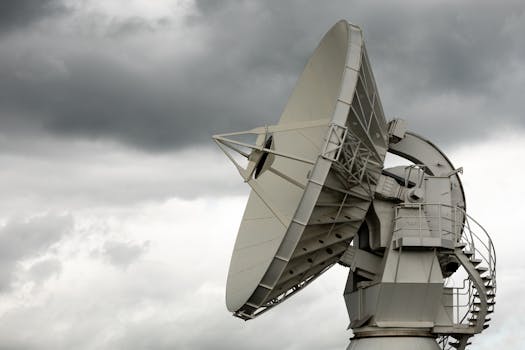GEO Satellites: Unlocking the Power of Geostationary Orbit

GEO Satellites: Unlocking the Power of Geostationary Orbit
GEO satellites, or Geostationary Orbit satellites, are a type of satellite that orbits the Earth at an altitude of approximately 36,000 kilometers, allowing them to remain stationary in relation to a specific point on the Earth’s surface. This unique characteristic makes GEO satellites an essential part of modern satellite technology, providing a wide range of services including telecommunications, weather forecasting, and navigation. In this article, we will delve into the world of GEO satellites, their history, benefits, and applications, starting with the Focus Keyword: GEO satellites.
History of GEO Satellites
The concept of GEO satellites was first proposed by science fiction writer Arthur C. Clarke in 1945. However, it wasn’t until the launch of the first commercial GEO satellite, Intelsat 1, in 1965 that the technology began to take shape. Since then, the number of GEO satellites in orbit has grown exponentially, with over 500 satellites currently operating in geostationary orbit. The development of GEO satellites has been driven by advances in technology, including the creation of more efficient launch vehicles, improved satellite design, and the development of new materials and propulsion systems.
Benefits of GEO Satellites
GEO satellites offer a number of benefits, including global coverage, high bandwidth, and low latency. Because GEO satellites are stationary in relation to a specific point on the Earth’s surface, they can provide continuous coverage of a particular region, making them ideal for applications such as telecommunications and weather forecasting. Additionally, GEO satellites can transmit large amounts of data, making them suitable for high-bandwidth applications such as video transmission and data transfer. The low latency of GEO satellites also makes them suitable for real-time applications, such as navigation and remote sensing.
Applications of GEO Satellites
GEO satellites have a wide range of applications, including telecommunications, weather forecasting, navigation, and remote sensing. In the field of telecommunications, GEO satellites are used to provide internet connectivity, mobile phone coverage, and television broadcasting. Weather forecasting is another critical application of GEO satellites, with satellites such as GOES-16 and Himawari-8 providing high-resolution images of the Earth’s weather patterns. Navigation is also a key application of GEO satellites, with systems such as GPS and GLONASS relying on GEO satellites to provide location information. Remote sensing is another important application of GEO satellites, with satellites such as Landsat 8 and Sentinel-2 providing high-resolution images of the Earth’s surface.
Challenges and Future Developments
Despite the many benefits of GEO satellites, there are also challenges associated with their use. One of the main challenges is the risk of collisions with other satellites or space debris, which can cause significant damage to the satellite and disrupt services. Another challenge is the limited availability of orbital slots, which can make it difficult to launch new satellites. To address these challenges, researchers are developing new technologies, such as advanced propulsion systems and more efficient satellite designs. The future of GEO satellites is likely to be shaped by advances in technology, including the development of new materials, more efficient launch vehicles, and the creation of more sophisticated satellite systems.
